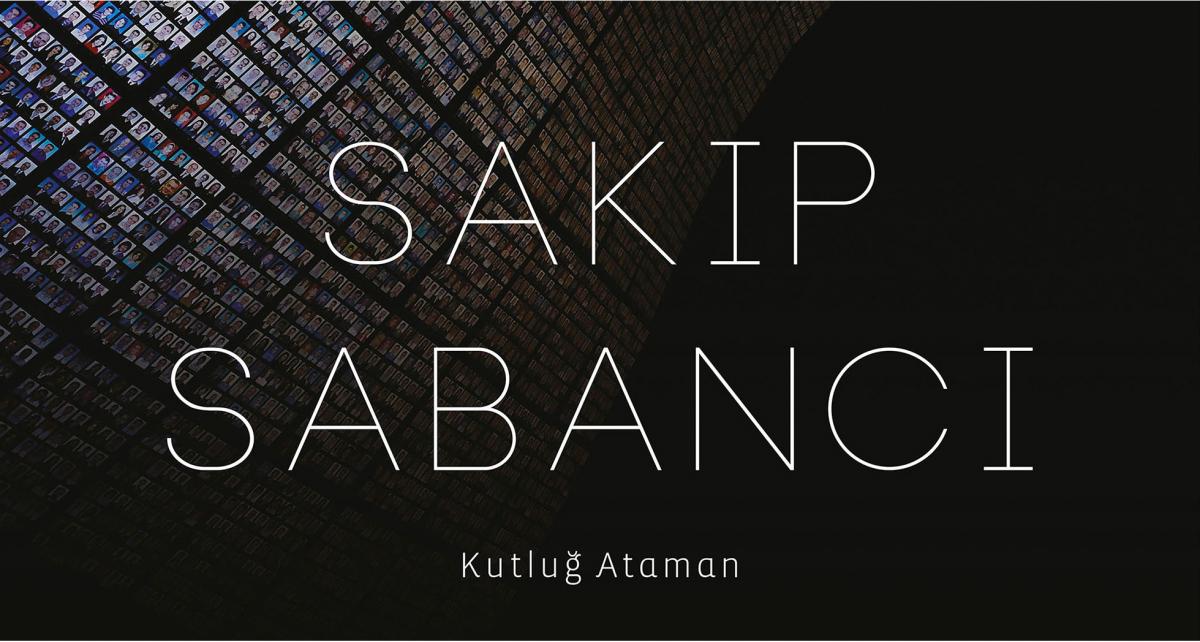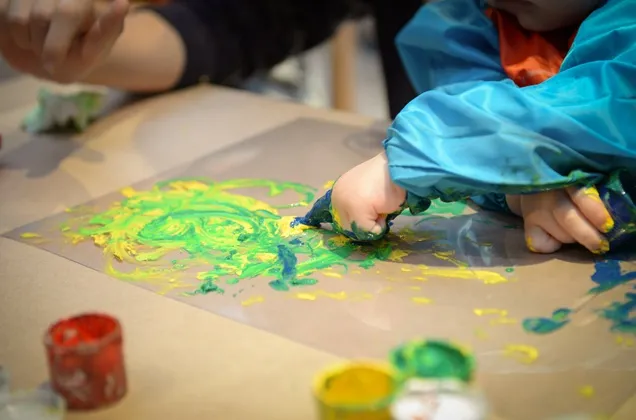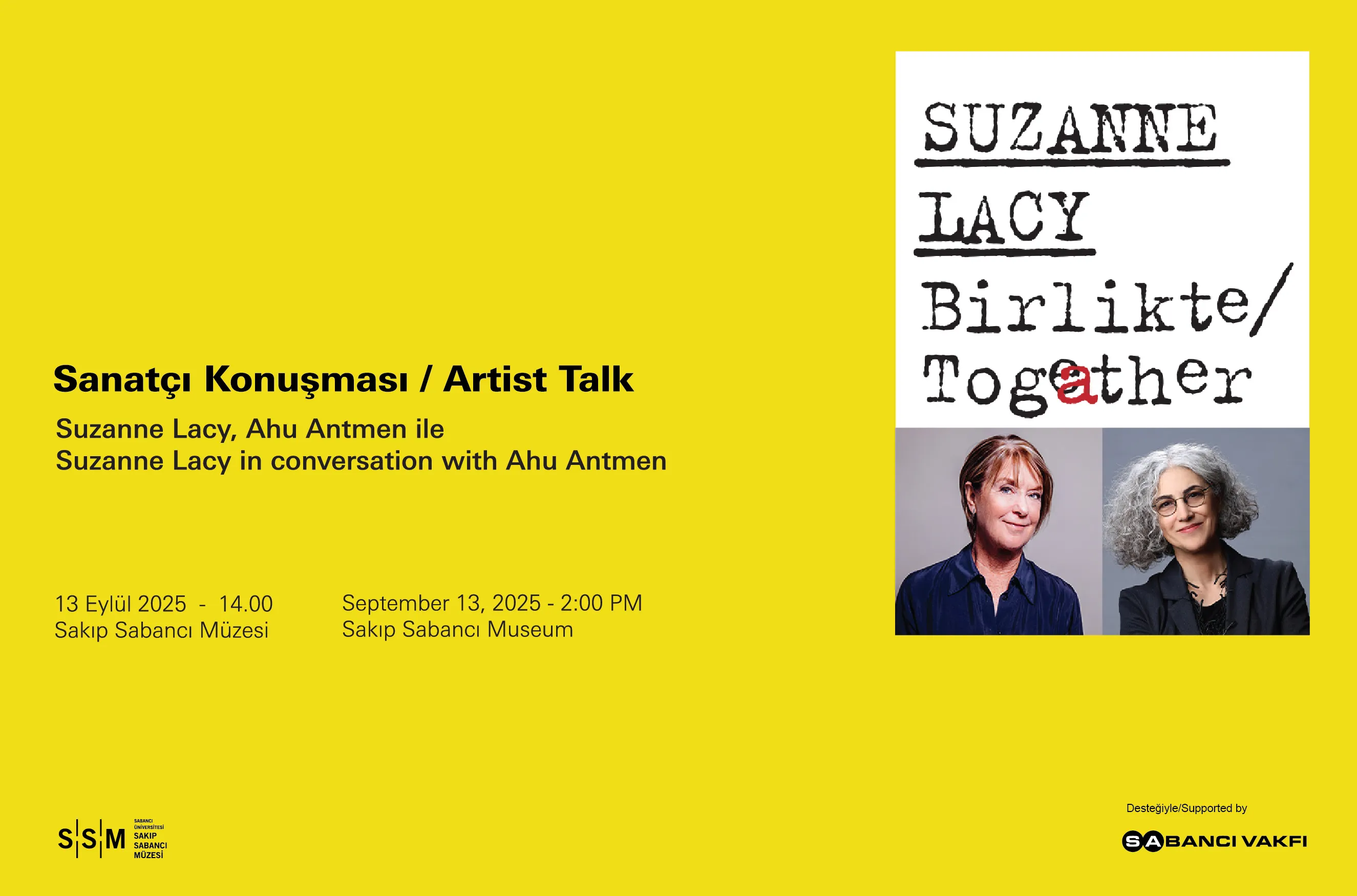23/05/2014
The work of art commissioned in 2011 by the Sabancı family to Kutluğ Ataman for the 10th anniversary of Sakıp Sabancı’s parting from us has opened to public viewing at the Sakıp Sabancı Museum on April 29.
The work aims to reflect the personality of the much missed leader, with his innovativeness, his sharing and embracing nature, his overriding principle of always giving first priority to people and his love and respect for them. Throughout his life, Sakıp Sabancı who merged with people with his sharp intelligence, his sense of humour and warm manner had many windows opening to life and people. Kutluğ Ataman’s work makes visible all the windows opened by Sakıp Sabancı.
Kutluğ Ataman, whose films and video art works have a worldwide audience, created the idea of this work which constitutes a moment of silence in honour of Sakıp Sabancı, emphasizing the industrialist’s contribution to the development of technology in Turkey. The basic element of this work, which utilizes the most advanced technology in visual arts, consists of the people. The work consisting of the passport sized photographs of thousands of people from all walks of life whose paths crossed the famous businessman’s in some way, who supported or were supported by him, shape his portrait, reflecting his sympathetic, tolerant and colourful personality, while implementing an extraordinary artistic idea, ‘beyond time’ as is worthy of Sakıp Sabancı.
The technical infrastructure of this work, which is one of the largest video art examples worldwide was completed by Larves Artware Solutions in three years. The Project consists of a driver card, a communication card and a control/administration software. The work comprises approximately 10,000 LCD panels, aligned in 144 modules, each consisting of sets of 64, stacked horizontally and vertically.

The LCD driver card communicates with an advanced level computer, thus transferring the photograph data. The external industrial computer is connected to the communication cards of the subsystems via fiber cables. The communication card transfers data consisting of thousands of photographs to the driver cards to be viewed on the screens in random order and at random intervals.

After the Sakıp Sabancı Museum, the work will be exhibited at the Sakıp Sabancı Mardin City Museum and Dilek Sabancı Art Gallery, each time being redesigned in accordance with each building’s architecture. Following Mardin, the piece is planned to be presented internationally at the leading museums worldwide.
What they said…
Güler Sabancı
Chairperson of the Board of Directors of Sabancı Holding
“Sakıp Sabancı cared for people and he touched people. He really physically touched them while talking to them. He did not discriminate in any way whatsoever. He had a pluralistic, extraordinary attitude. His positive energy was contagious. He looked straight into the eyes of the person he was talking to. He made everyone feel special. He loved people very much and he embraced them.
Three years ago, we formed a committee to lead the preparations for the 10th anniversaries of the foundation of the Sakıp Sabancı Museum and the 10th anniversary of Sakıp Sabancı’s parting from us. The Board of the Committee was chaired by Ms Sevil Sabancı. Ideas were discussed as to what to do, and we thought of making a film. Then we came up with the name of Kutluğ Ataman. We briefed him about the concept of the project and the core of the thoughts we have in mind; as a family we decided that an art work which reflects Sakıp Sabancı’s energy, the way he touched people, the way he embraces people will also reflect Sakıp Sabancı himself. And now, here we are, commemorating Sakıp Sabancı on the 10th anniversary of his parting from us, with a work of art worthy of him. I thank the Sabancı family, Türkan Sabancı, Sevil Sabancı and Dilek Sabancı for their support. I thank Nazan Ölçer and her team. I thank Kutluğ Ataman for creating this work of art which reflects Sakıp Sabancı’s energy and which will allow this energy to be shared over many years.”
Dr. Nazan Ölçer
Director of SSM
“This work of art is a commemoration by the Sabancı family. While contemplating how to commemorate the 10th anniversary of Sakıp Sabancı’s partisng from us, we consulted our Board and our International Board of Overseers including curators and directors of museums from all over the world. Traditional ways of commemoration may be building a school or a dormitory and naming it after the person; but the Sabancı Foundation has been doing this for years. We never considered commissioning a statue, neither did the Sabancı Family. The work should reflect the energy and emphasize the modern and forward-looking perspective of Sakıp Sabancı. In 2010, it was decided that the work of art should be created by Kutluğ Ataman.
Don’t ask me ‘why Kutluğ Ataman?’, who else could it be? We all know how well Kutluğ Ataman is known globally. He represents contemporary Turkish art with great success, has won many prestigious awards, and his works are in various collections abroad. When I first saw the work of art he created, my feeling was one of happiness. Kutluğ Ataman’s name was decided upon by the end of October 2010. The contract was drawn in 2011. That is when the preparations of art work started. The family’s wish was the creation of a work whose focus consisted of ‘people’. Kutluğ Ataman was given thousands of photographs. There is also another work by Kutluğ Ataman at our Arts of Book and Calligraphy Collection, the Mesopotamia Dramatourgies No 5, SU.”
Kutluğ Ataman
Artist
“When I was first approached for the project, my first thought was that I had never met Sakıp Sabancı. And I was not a portraitist. I thought this would be difficult, because I have a hard time with such commissioned works. Something much more than making a documentary on Sakıp Sabancı was required. For me, Sakıp Sabancı is a leader; his leadership lies in the fact that he was a successful and famous businessman, and that he changed the lives of people and the progression of Turkey. This was not something he could have done alone. No leader becomes a leader just by himself/herself. He/she must be able to organize people, to convince people, to bring them together and to make them accept his/her vision. People must feel the person they accept as their leader within themselves. Not everyone has that capability. That is why I wanted to point to the people who formed the leader.
I suggested to ask people who have somehow touched Sakıp Sabancı to give their passport size photographs if they wish. We needed more than 30,000 participants. This was something not done before. I had not done anything like this, and neither had anyone else. We created something from scratch, designing, testing, and preparing the software. It took a long time. Initially, each mosaic piece of the work was 50 cm thick, we reduced that gradually. Then we mounted it and had Larves, a Turkish firm at the Sakarya University Technocity did the production. The work consisting of almost 10,000 screens became a modern mosaic. His colleagues, his people, are coming together to thank Sakıp Sabancı. The work is liquid actually, you can not hold it in your hand. It is an idea, it is not static like a statue, it is dynamic... It is an energy... I think the most beautiful aspect of the work is that, we can disintegrate all its components and reintegrate them in the form of another work. We can reconstruct the work at another venue and in another form, without disrupting its essence.”




